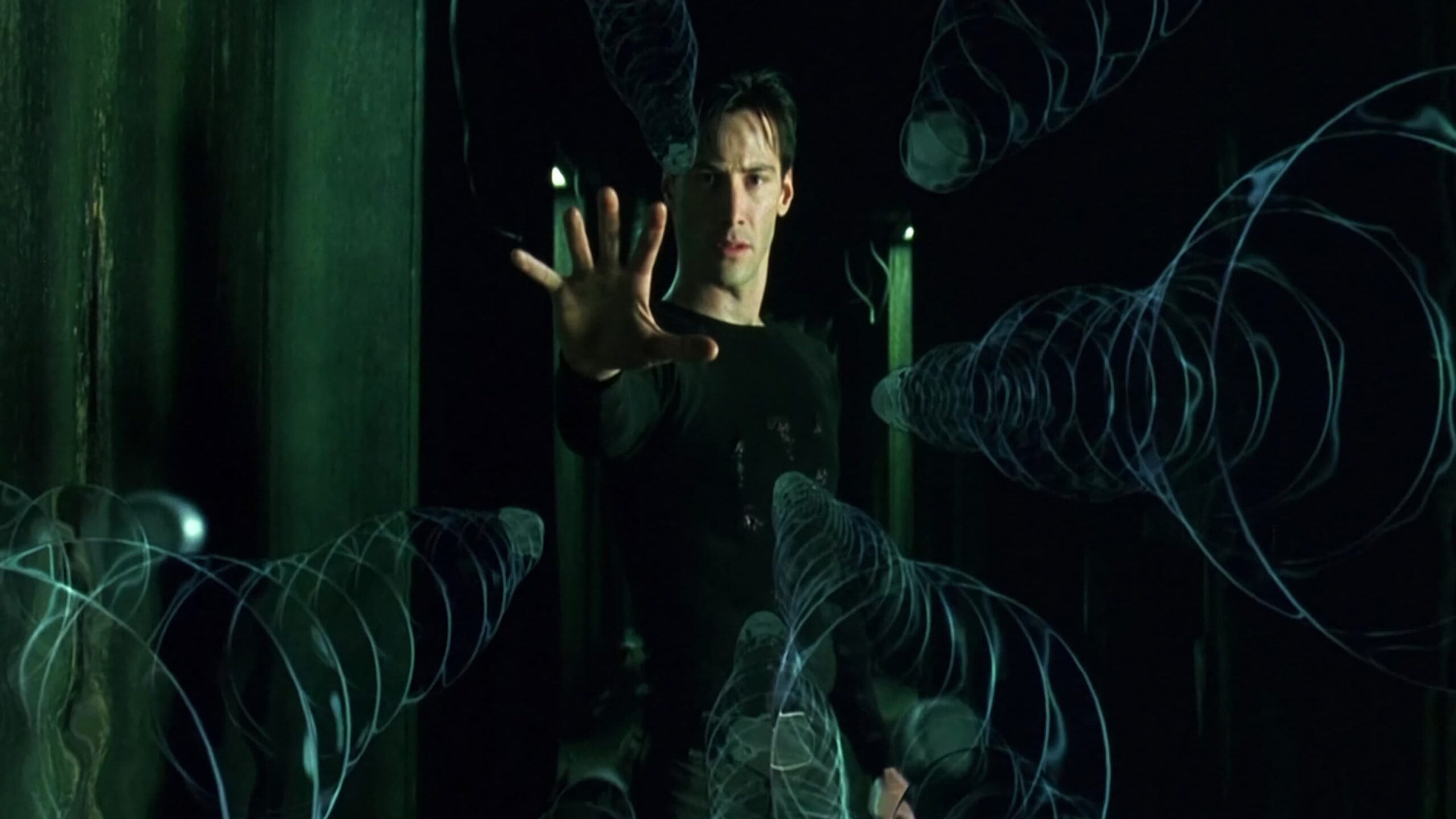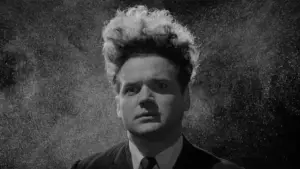Table of Contents
Introduction
The Wachowskis’ The Matrix (1999) is a groundbreaking sci-fi classic that redefined how audiences think about reality, technology, and human agency. This Matrix explained post dives into the film’s profound exploration of philosophical and psychological themes, solidifying its status as one of the most thought-provoking movies of the modern era.
Set in a dystopian future where humanity unknowingly lives in a simulated reality controlled by intelligent machines, The Matrix tells the story of Neo, a hacker who discovers the truth and begins a journey of self-discovery. Beyond its thrilling action and groundbreaking special effects, the film delves into existential questions about free will, the nature of truth, and the systems of control that shape our perceptions.
In this post, we’ll unravel the psychological and philosophical layers of The Matrix, exploring its core themes, visual storytelling, and enduring cultural impact. From its commentary on simulated reality to its examination of choice and resistance, The Matrix remains a mind-blowing cinematic experience that continues to resonate with audiences today.
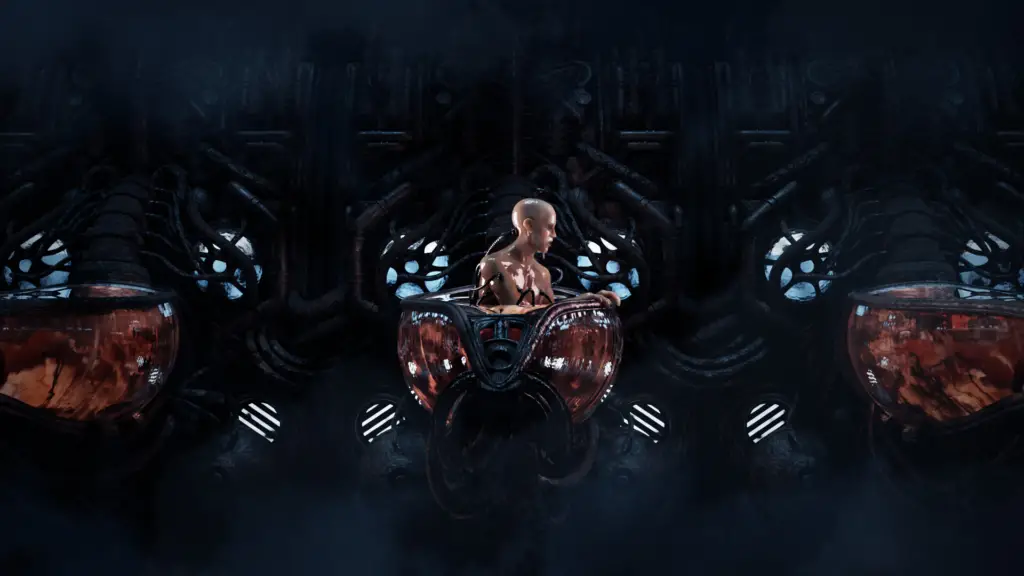
Core Themes in The Matrix
The Illusion of Reality
One of the most compelling themes in The Matrix is the concept of simulated reality. The titular Matrix is a computer-generated simulation designed to enslave humanity by creating an artificial world indistinguishable from the real one. This idea forces viewers to question their own perceptions of reality and whether their senses can truly be trusted.
Philosophical Roots:
The film draws heavily from philosophical works, including Plato’s Allegory of the Cave. In both, individuals are trapped in a false reality and must confront the painful process of awakening to the truth. Similarly, René Descartes’ skepticism about the reliability of the senses underpins the Matrix’s premise that what we perceive may not align with objective reality.
Existential Implications:
The movie goes beyond questioning the nature of reality; it explores what it means to break free from illusion. Neo’s journey to awakening represents the struggle to confront uncomfortable truths and find purpose beyond the surface-level distractions of life.
Relevance Today:
In an era of virtual reality, deepfakes, and algorithmic influence, The Matrix feels more relevant than ever. Its examination of artificial worlds mirrors growing concerns about how technology shapes our understanding of reality and blurs the line between truth and illusion.
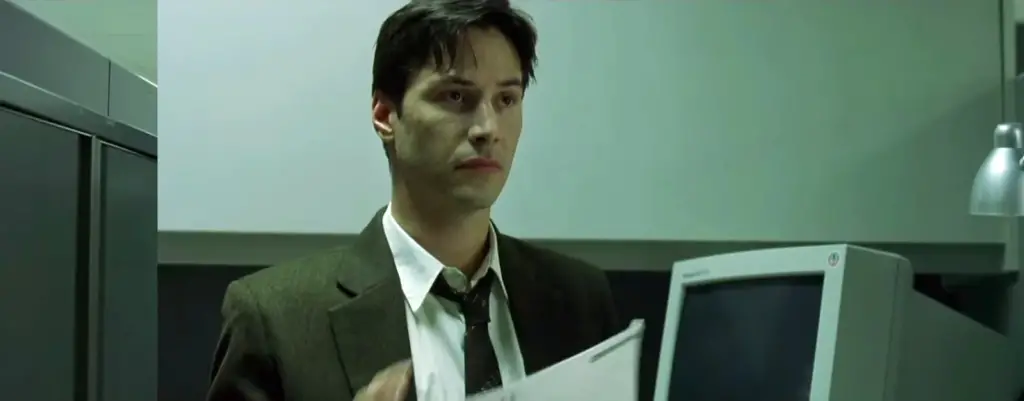
Choice and Free Will
A defining theme of The Matrix is the tension between destiny and autonomy, explored through Neo’s journey to self-discovery. The iconic red pill vs. blue pill scene encapsulates this struggle, forcing Neo to choose between remaining in comfortable ignorance or awakening to an unsettling truth.
The Red Pill as a Metaphor:
The red pill represents not only the pursuit of knowledge but also the courage to confront reality, no matter how uncomfortable. Neo’s decision to take the red pill is a pivotal moment, symbolizing his willingness to reject societal illusions and embrace free will.
Fate vs. Free Will:
Throughout the film, Neo grapples with the idea of whether his choices are truly his own or predetermined. The Oracle’s cryptic guidance—”You’ve already made the choice; now you have to understand it”—highlights this philosophical tension. By the end, Neo’s realization of his potential underscores the power of belief and self-determination.
Impact on the Audience:
The Matrix challenges viewers to reflect on their own lives: Are they active participants making conscious choices, or are they passively following a script dictated by external forces? The film’s exploration of free will resonates deeply, urging introspection about personal agency in a world shaped by societal expectations and technological influence.
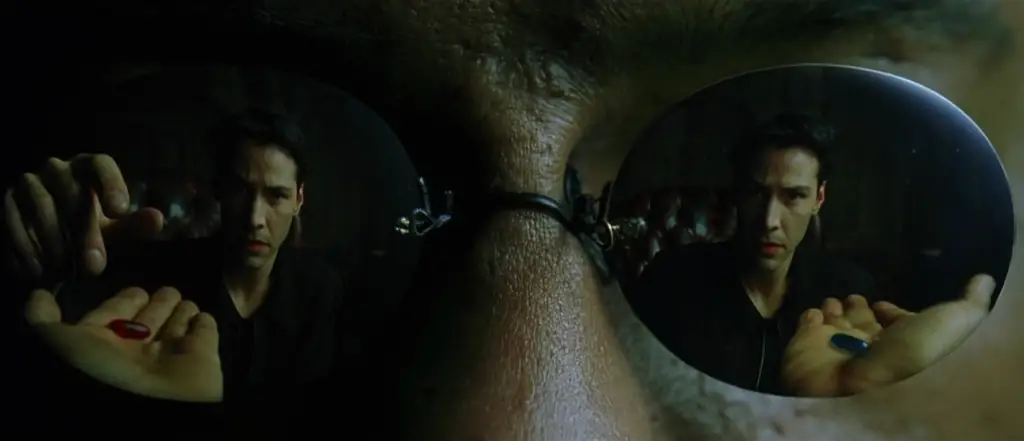
The Nature of Control and Resistance
At its core, The Matrix is a story about breaking free from systems of control. The Matrix itself, a simulation designed by machines to enslave humanity, serves as a metaphor for the many ways in which societal structures and ideologies manipulate perception and suppress autonomy.
The Matrix as a System of Oppression:
The film portrays the Matrix as more than just a physical prison; it’s a psychological one, designed to pacify humans by keeping them unaware of their true conditions. This aligns with real-world discussions about how institutions, media, and technology influence thoughts and behavior.
Morpheus and the Resistance:
Morpheus and his crew represent the fight against oppressive systems. Their mission to “free minds” parallels historical and modern movements for liberation, emphasizing the importance of awareness and resistance against forces that perpetuate control.
Agent Smith as a Symbol of Conformity:
Agent Smith, the Matrix’s enforcer, embodies the dangers of conformity and authoritarianism. His disdain for humanity and relentless pursuit of Neo highlight the stakes of challenging the status quo. Smith’s role as both a defender of the system and an anomaly within it underscores the fragility of systems that rely on suppression.
The Power of Awareness:
Neo’s transformation into “The One” is not just about gaining physical powers; it’s about understanding the Matrix’s rules and transcending them. His journey symbolizes the potential for individuals to awaken, resist, and reshape the systems that confine them.
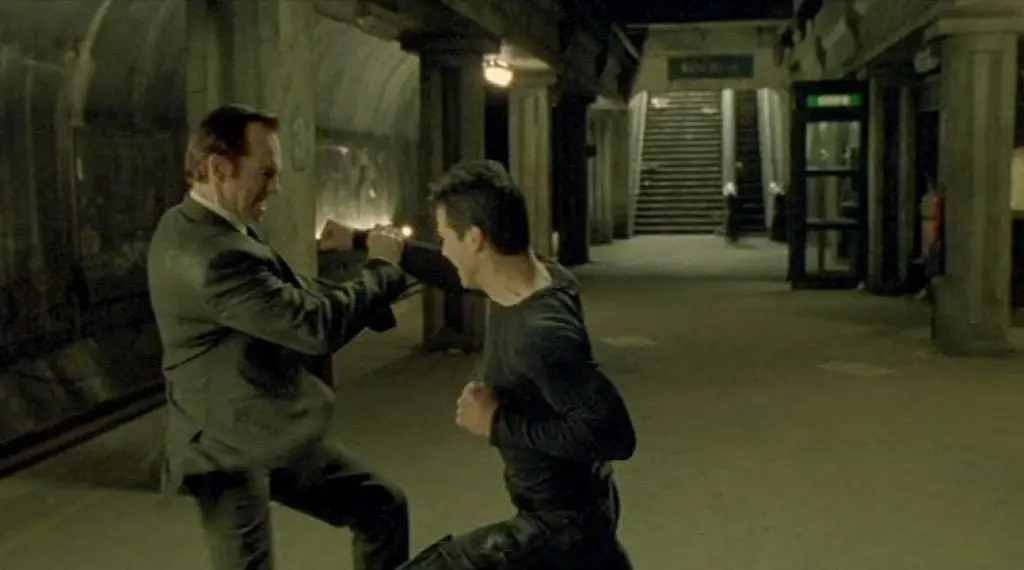
Philosophical and Psychological Layers in The Matrix
Simulated Reality and Existential Questions
The Matrix challenges viewers to confront profound existential questions: What is real? How do we define our existence? The film uses the concept of a simulated reality to delve into these philosophical quandaries, making audiences question their own perceptions of the world.
The Matrix as a Modern Allegory:
Drawing from Plato’s Allegory of the Cave, the Matrix is depicted as a shadow world—an illusion that keeps humanity enslaved. Like Plato’s prisoners, Neo must confront the painful process of leaving the cave (or Matrix) to see the truth. This process reflects the existential challenge of finding meaning in a reality that may be artificial or constructed.
The Psychological Toll of Awareness:
Neo’s awakening is not without its struggles. The transition from the Matrix to the real world forces him to confront uncomfortable truths about himself and the world around him. This psychological journey mirrors the human experience of grappling with disillusionment, change, and the search for purpose.
Implications for Our World:
In an age of increasing reliance on technology, The Matrix resonates with contemporary concerns about artificial intelligence, digital reality, and how these advancements shape human existence. The simulation becomes a metaphor for the distractions and systems that prevent individuals from fully engaging with the authentic world.
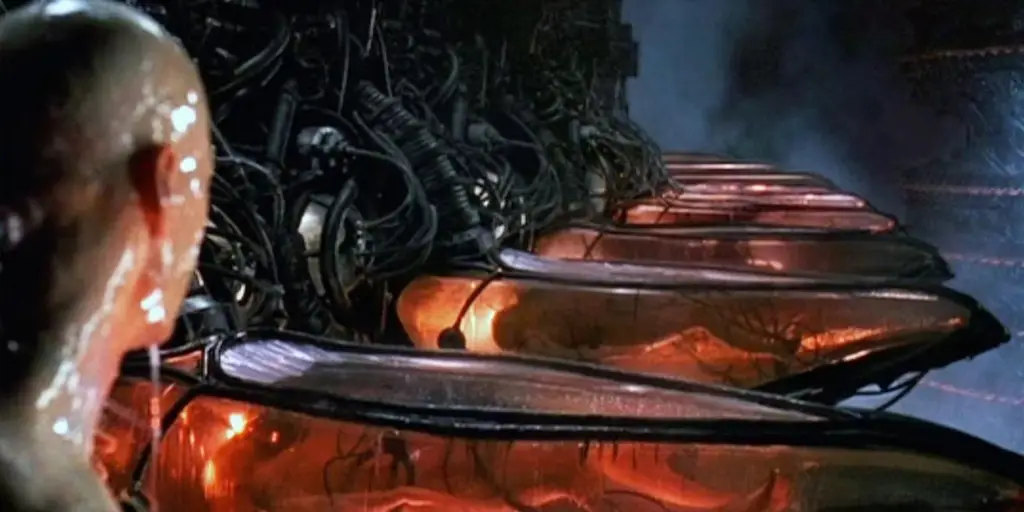
The Hero’s Journey and Self-Discovery
Neo’s transformation from an unassuming hacker into “The One” follows the classic structure of the Hero’s Journey, a narrative framework that symbolizes personal growth, self-discovery, and the overcoming of inner and outer obstacles. The Matrix weaves this journey with psychological depth, making Neo’s story universally relatable.
Call to Adventure:
At the start, Neo feels a sense of dissatisfaction with his life, a subconscious awareness that something is wrong with the world. This unease mirrors the human experience of questioning one’s purpose and identity. Morpheus’s introduction of the red pill represents Neo’s choice to embrace his destiny and pursue the truth.
Trials and Transformation:
As Neo trains with Morpheus and confronts the realities of the Matrix, he grapples with self-doubt and fear. His struggle to believe in his own potential mirrors the psychological battle many face when breaking free from limiting beliefs or societal expectations.
The Realization of Potential:
Neo’s moment of transformation occurs when he fully embraces his identity as “The One.” By understanding and transcending the rules of the Matrix, he symbolizes the power of belief and self-actualization. This shift is a profound psychological statement: to achieve greatness, one must first confront and overcome internal barriers.
Universal Resonance:
Neo’s journey reflects a universal narrative of self-discovery and empowerment. It resonates with anyone who has ever faced a pivotal choice or struggled to redefine themselves in the face of adversity.
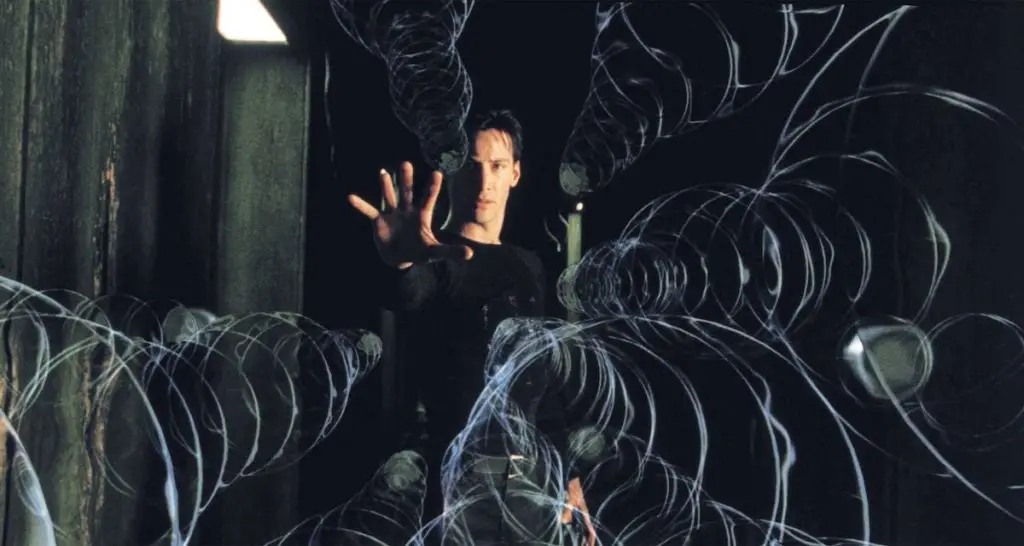
The Power of Belief and Perception
A recurring theme in The Matrix is the idea that perception shapes reality. Neo’s journey emphasizes that limitations often exist not in the world itself but in the mind, and the belief in one’s potential can be the key to overcoming them.
Breaking the Illusion:
Early in the film, Neo’s understanding of the world is bound by the rules of the Matrix, which appear unbreakable. Morpheus’s training and the Oracle’s guidance challenge him to question these limitations, shifting his perception from what “is” to what “could be.” The phrase “There is no spoon,” spoken during Neo’s interaction with a young boy, encapsulates this concept: the limitations of the world are only as real as one’s belief in them.
The Role of Confidence:
Neo’s turning point comes when he begins to believe in himself. By letting go of self-doubt, he masters the rules of the Matrix and ultimately transcends them. His ability to stop bullets and defeat Agent Smith highlights how perception and belief can reshape reality.
Psychological Insight:
This theme parallels real-world psychology, particularly in areas like self-efficacy and growth mindset. Just as Neo unlocks his potential by believing in himself, individuals can achieve remarkable things by shifting their perception of their own capabilities.
Relevance to Modern Life:
In a world often defined by external pressures and societal expectations, The Matrix reminds us of the power of belief and the importance of challenging the narratives we tell ourselves. Neo’s journey resonates as a call to recognize and harness our inner strength.
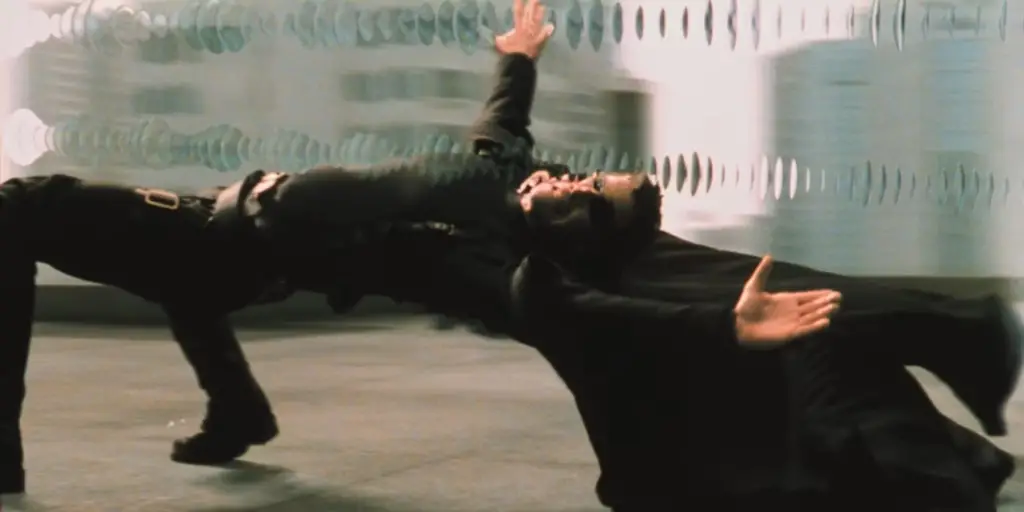
Visual and Narrative Techniques in The Matrix
Groundbreaking Visual Effects
The Matrix revolutionized visual storytelling with its innovative use of technology, particularly the now-iconic “bullet time” effect. These groundbreaking visuals not only captivated audiences but also reinforced the film’s exploration of reality, perception, and control.
Bullet Time:
The slow-motion sequences, such as Neo dodging bullets, immerse viewers in the surreal physics of the Matrix. This technique visually demonstrates the idea that the Matrix operates under different rules, highlighting the flexibility of reality within the simulation.
Action as Metaphor:
The elaborate fight scenes and acrobatics symbolize Neo’s growing understanding of the Matrix. Each visually stunning encounter serves as a metaphor for breaking free from the constraints of the mind and mastering one’s environment.
Practical and Digital Fusion:
Directors Lana and Lilly Wachowski seamlessly blended practical stunts with cutting-edge CGI, creating a visual language that was ahead of its time. This combination grounded the film’s fantastical elements in a tactile reality, further blurring the line between what is real and what is artificial.
Cultural Impact:
The effects in The Matrix set a new standard for action films and have been endlessly referenced and parodied in pop culture. Beyond their aesthetic appeal, they underscore the movie’s deeper message: reality is malleable, and perception shapes experience.
Where to Watch or Buy The Matrix
If you’re ready to revisit the world of The Matrix or experience its groundbreaking story for the first time, here are the best ways to watch or own this iconic film.
Streaming Options
- Amazon Prime Video: Stream The Matrix in HD and immerse yourself in its visually stunning and thought-provoking narrative.
Watch The Matrix on Amazon Prime Video here.
Purchase Options
- DVD/Blu-ray: Own a copy of The Matrix on DVD or Blu-ray, complete with behind-the-scenes content and commentary for deeper insights into the film’s creation.
Buy The Matrix on DVD/Blu-ray here.
Recommended Books to Explore Themes in The Matrix
For those intrigued by the deeper philosophical and psychological themes in The Matrix, these books provide thought-provoking insights and complement the film’s exploration of reality, control, and human potential.
Simulacra and Simulation by Jean Baudrillard
Referenced in the film itself, this postmodern classic explores the concept of simulated realities and how they shape human understanding. It’s a must-read for anyone interested in the philosophical foundation of The Matrix.
Buy Simulacra and Simulation here.
Plato’s Republic by Plato
Featuring the famous Allegory of the Cave, this text provides a foundational framework for understanding the film’s themes of enlightenment and the nature of truth.
Buy Plato’s Republic here.
The Hero with a Thousand Faces by Joseph Campbell
This seminal work on the Hero’s Journey sheds light on Neo’s transformation, connecting it to a timeless narrative of self-discovery and empowerment.
Buy The Hero with a Thousand Faces here.
Being and Time by Martin Heidegger
An essential work in existential philosophy, this book explores the nature of existence and human agency, echoing the film’s exploration of purpose and free will.
Buy Being and Time here.
The Matrix and Philosophy: Welcome to the Desert of the Real edited by William Irwin
This collection of essays delves into the philosophical questions raised by the film, from the nature of reality to the ethics of artificial intelligence.
Buy The Matrix and Philosophy here.
Blink: The Power of Thinking Without Thinking by Malcolm Gladwell
An insightful exploration of intuition and snap judgments, this book aligns with the film’s emphasis on perception and belief.
Buy Blink here.
Conclusion: The Matrix Explained
The Matrix remains a cultural and philosophical landmark, blending breathtaking visuals with profound questions about reality, control, and human potential. Its layered narrative challenges viewers to confront the illusions shaping their lives and consider the power of choice and belief in breaking free from those constraints.
This Matrix explained post has delved into the film’s philosophical and psychological depths, highlighting how it draws from timeless ideas like Plato’s Allegory of the Cave and the Hero’s Journey. It’s more than a sci-fi action film—it’s a meditation on what it means to be human in an increasingly complex and controlled world.
As relevant today as it was upon its release, The Matrix continues to inspire audiences to reflect on their own reality and the choices they make within it. Whether viewed as a thrilling action story or a profound existential inquiry, The Matrix leaves an enduring impact on those who dare to question the world around them.
Take a look at our other in-depth movie analyses here.

